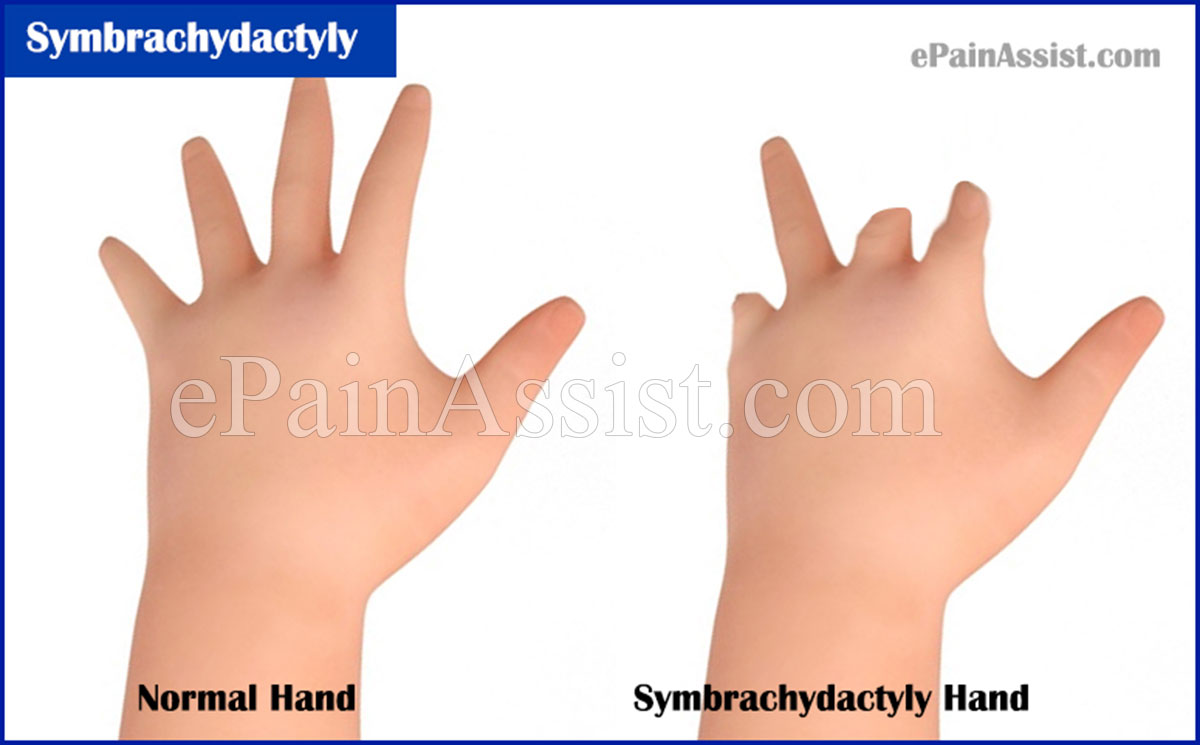What is Symbrachydactyly?
Symbrachydactyly[1] is a congenital abnormality in which a child is born with abnormally short fingers or toes which are webbed or joined together. In some cases of this condition, there may be complete absence of fingers or toes even if the fingers or toes are present there will be no bones in them to keep them straight and in their normal positions. It is quite a rare disease without an exact cause for the condition. Surgery is one of the ways by which Symbrachydactyly is treated. Symbrachydactyly basically has three forms, one is in which the thumb is relatively normal but there are abnormally short fingers. This is the mildest form of this condition. The second type is in which only the thumb and little finger is present and all the other fingers are either webbed or joined together or are missing. This is the moderately severe form of this condition. The third form which is the most severe form is in which all the fingers including the thumbs are missing or are abnormally short and webbed together.

What is the Cause of Symbrachydactyly?
Majority of the cases of Symbrachydactyly do not have a known cause. Research suggests it is not a condition which can be said to have been inherited. In some cases, Symbrachydactyly is seen in children with a genetic disease known as Poland Syndrome in which the chest muscles are not fully developed on one side.
What are the Symptoms of Symbrachydactyly?[2]
Symbrachydactyly is a condition which is easily visible when the child is born. Sometimes, an ultrasound can also show whether the child has this condition or not. The classic symptoms of Symbrachydactyly are the child having abnormally short fingers or toes and they will be joined or webbed together, inability to use the hand appropriately.
How is Symbrachydactyly Diagnosed?
Symbrachydactyly is a condition which is quite apparent at the time of birth and in some cases it can be even seen before birth by an ultrasound. In majority of the cases, the underlying muscles, ligaments, and tendons along with the bones will also be affected and hence an x-ray to look at these structures may also help with the diagnosis and formulate a treatment plan for best recovery.
How is Symbrachydactyly Treated?[3]
Surgery is the most preferred way of treating Symbrachydactyly. The nature of surgery done will differ and depends on the severity of the condition. The surgery is normally done when the child is between 6 to 12 months of age. In some severe cases of Symbrachydactyly, additional surgeries may be required which may be done later in life. For mild forms of Symbrachydactyly, only minor corrections in the skin and soft tissues may be enough to treat the condition. In cases where the condition is more severe, then a bone transfer usually from the toes will need to be done to lengthen the fingers. In some cases even a toe may be transplanted to the hand to assist in gripping and grasping objects. Some of the complications that can be encountered after surgery are infection, inability for the bone to fully heal, incomplete correction, stiffness of the joints, frequent finger dislocations later in life. Once surgery is done to correct Symbrachydactyly, the child is placed in a cast for about four weeks to allow healing of the bones. After removal of the cast, a splint will be utilized for separating the fingers of the hand for about six weeks. Physical and occupational therapy will then be done to reduce stiffness and strengthen the fingers. The child will need frequent followups in the ensuing years to check the healing and function of the fingers to determine if additional surgery may be required for further correction.
What is the Overall Prognosis of Symbrachydactyly?
When we speak of the prognosis of Symbrachydactyly then surgery has been shown to be very successful in treating majority of the cases even though additional surgeries may be required to improve function and appearance of the finger even more but all said and done there will always be a different look to the fingers than the normal finger which the child will have to cope up with. The child may also use prosthetics for better function in the ensuing years as the child grows to cope up with Symbrachydactyly.
- [Symbrachydactyly] – PubMed (nih.gov)
- Webbed fingers (nih.gov)
- Symbrachydactyly (nih.gov)
